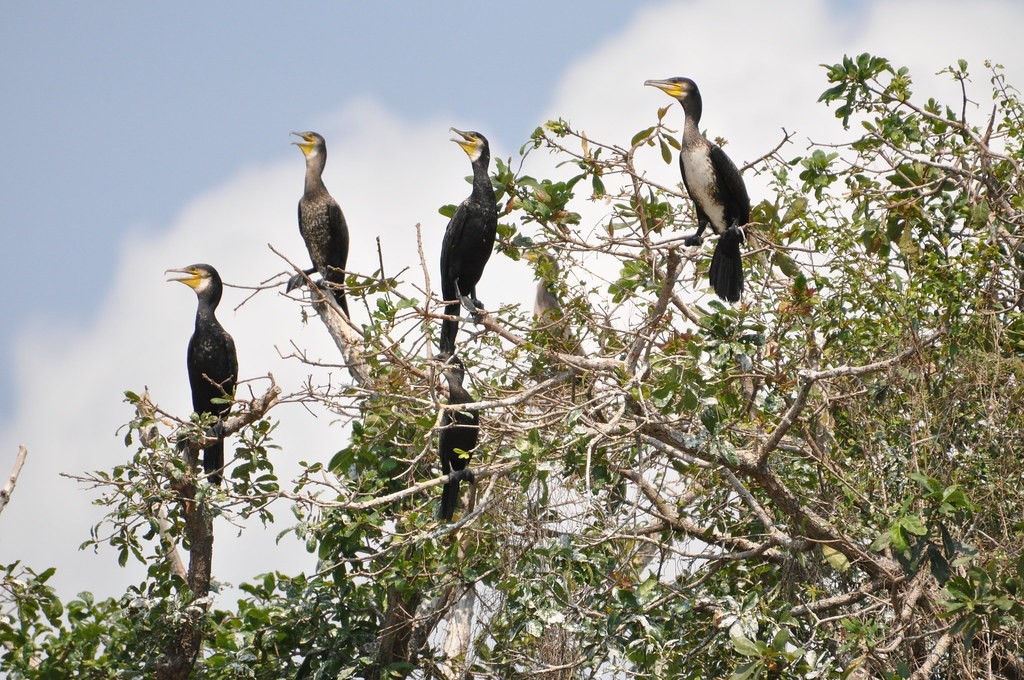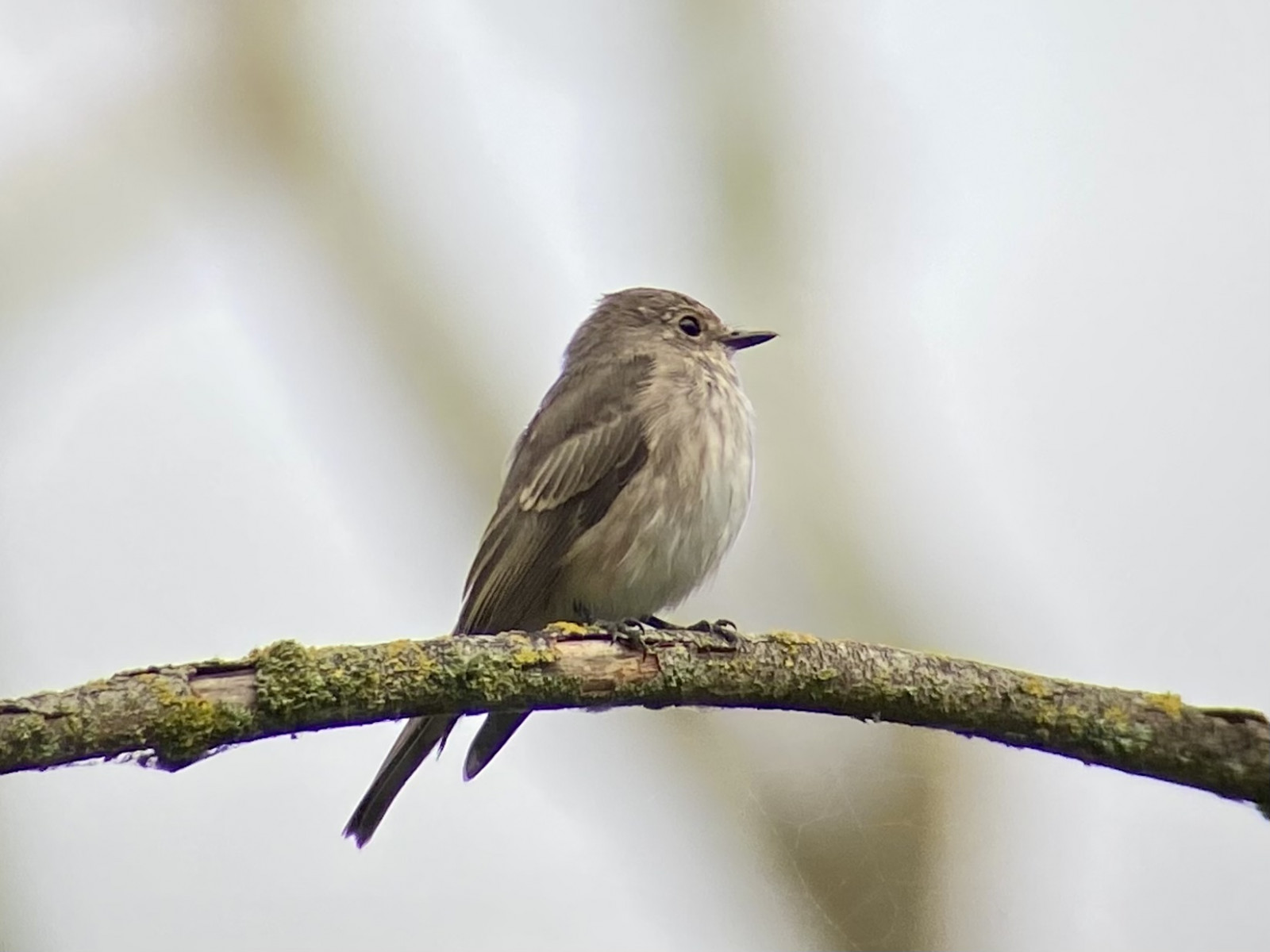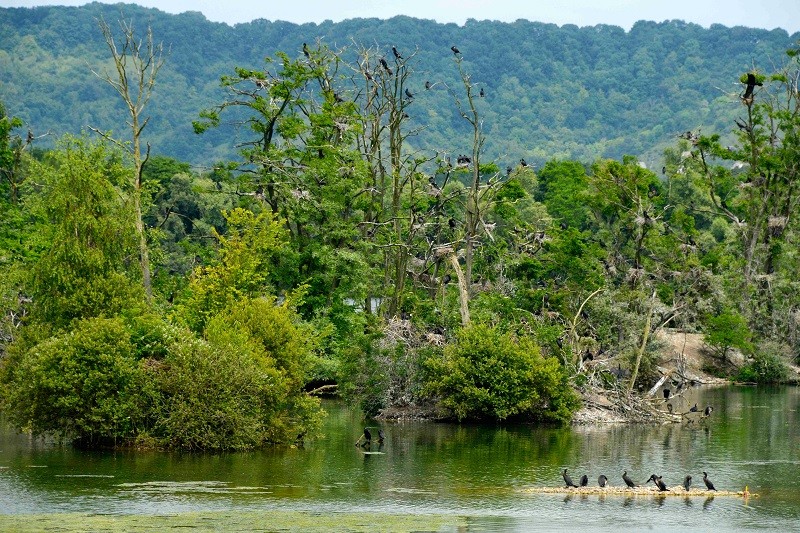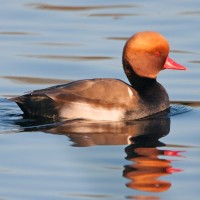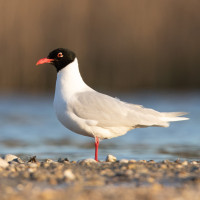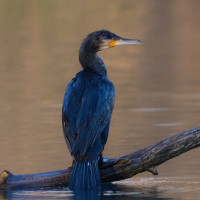Description
Downstream of Paris, the Seine describes wide meanders bordered on one bank by steep and dry limestone hillsides and on the other by more or less flat expanses. These "loops" offer a mosaic of environments to a very diverse avifauna. 25 kilometers southeast of Rouen, the "Loop of Poses" houses Réserve Ornithologique de la Grande Noë, a great place for birdwatching. The diversity of habitats and its location at the mouth of the Eure and Andelle rivers, make it an ideal stop on an important migration route. More than 250 different species of birds have been observed here. The lake L’étang de la Grande Noë is also a breeding site for many birds.
The wetland has various depths, but also islets. One of them, wooded, has the biggest colony of Great Cormorant in Normandy. The other two islets have been kept bare and stony, allowing Mediterranean Gull, Black-headed Gull and Common Tern to nest there. Among the other birds you can see are Red-crested Pochard, Common Pochard, Northern Shoveler, Common Goldeneye (in winter), Water Rail, Northern Lapwing, Common Kingfisher, Sand Martin, Little Bittern (very rare), Great Egret, Little Egret, Cattle Egret, Grey Wagtail, Eurasian Siskin and Cetti's Warbler. In winter, 10,000 to 15,000 gulls gather in dormitories on the largest body of water.
_________________________
Français: La diversité des habitats et la situation géographique privilégiée de la boucle de Poses, au débouché des rivières Eure et Andelle en font une halte idéale sur une importante voie de migration. L’étang de la Grande Noë constitue même un site de reproduction exceptionnel pour de nombreux oiseaux migrateurs. Plus de 250 espèces d’oiseaux différentes y ont été observées dont 115 espèces qui y ont déjà niché. La variété des espèces qui cohabitent est remarquable : le fuligule milouin, le fuligule morillon, la foulque macroule, la poule d’eau, le grand cormoran, le héron cendré, le grèbe huppé, le goéland, le cygne tuberculé, le canard colvert, le martin-pêcheur, l’hirondelle de rivage ou encore le butor étoilé et le blongios nain protégés sur le plan européen. La réserve abrite aussi les colonies de mouette mélanocéphale, de mouette rieuse et de sterne pierregarin les plus importantes de Normandie.
Details
Access
To get to the Grande Noé, you must go to Val-de-Reuil/27, which is accessed by crossing Val-de-Reuil from West to East following the D6154. Arrived at the station, continue this road to the T-junction with the D110. Turn right, after a kilometer, you arrive at the reserve which will be on your left, but you will park in a parking lot immediately on the right. You pass through a tunnel under the D110 and you arrive at the first observatory. Following the trails either to the northeast or to the south, you will find two other observatories. Be careful not to disturb the birds: be discreet in the observatories and do not leave the trails. Access is free. There are information panels around the hides. Click on the P in the map to get directions.
_________________________
Français: Pour vous rendre à la Grande Noé, vous devez vous rendre au nouveau de la gare de Val-de-Reuil/27, à laquelle on accède en traversant Val-de-Reuil d’Ouest en Est en suivant la D6154. Arrivés au niveau de la gare, poursuivre cette route jusqu’au carrefour en T avec la D110. Prendre à droite, au bout d’un kilomètre, vous arrivez à la Grande Noé qui se trouvera sur votre gauche mais vous vous garerez dans un parking immédiatement à droite. Vous passez grâce à un tunnel sous la D110 et vous arrivez au premier observatoire. En suivant les sentiers soit vers le Nord-est, soit vers le Sud, vous arriverez à deux autres observatoires. Attention à ne pas déranger les oiseaux : soyez discrets dans les observatoires et ne quittez pas les sentiers. Des panneaux d’informations aux abords de ces cabanes d’observation vous permettent d’identifier les différentes espèces présentes. L'accès est libre et ouvert à tous, dans le respect, bien-sûr de la tranquillité des lieux et de la réglementation en vigueur.
